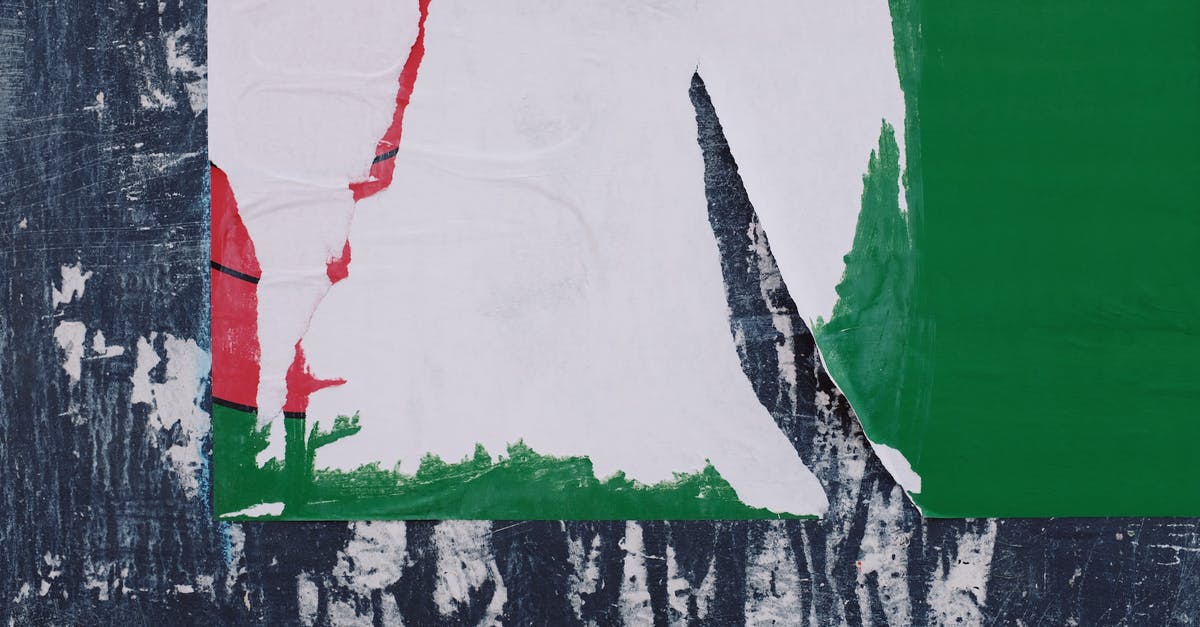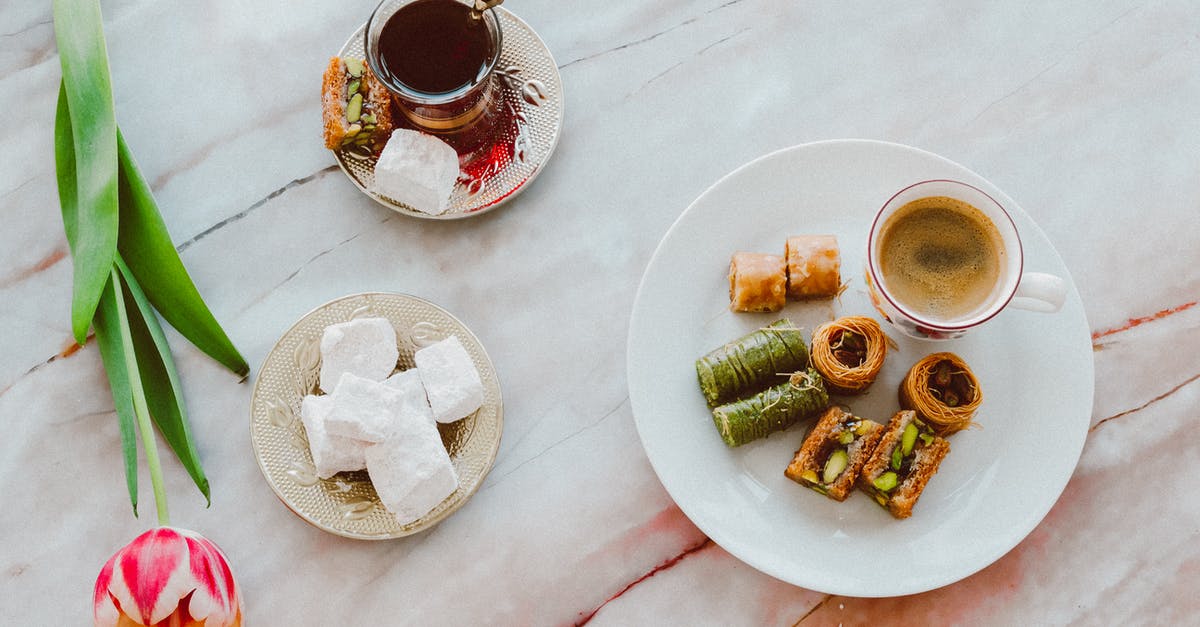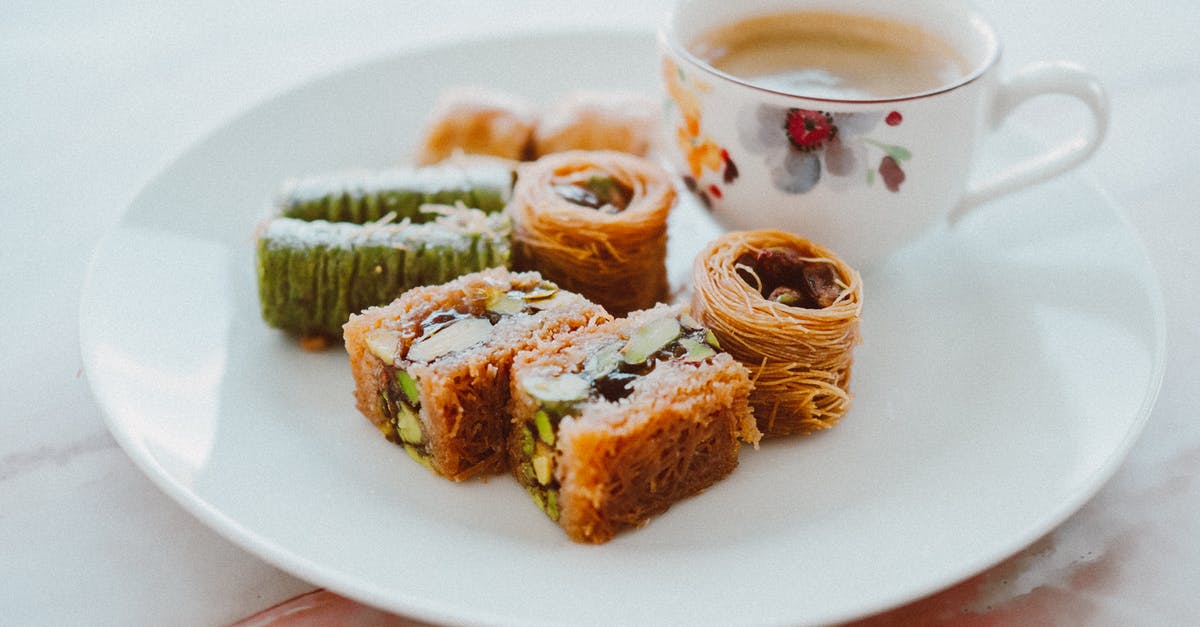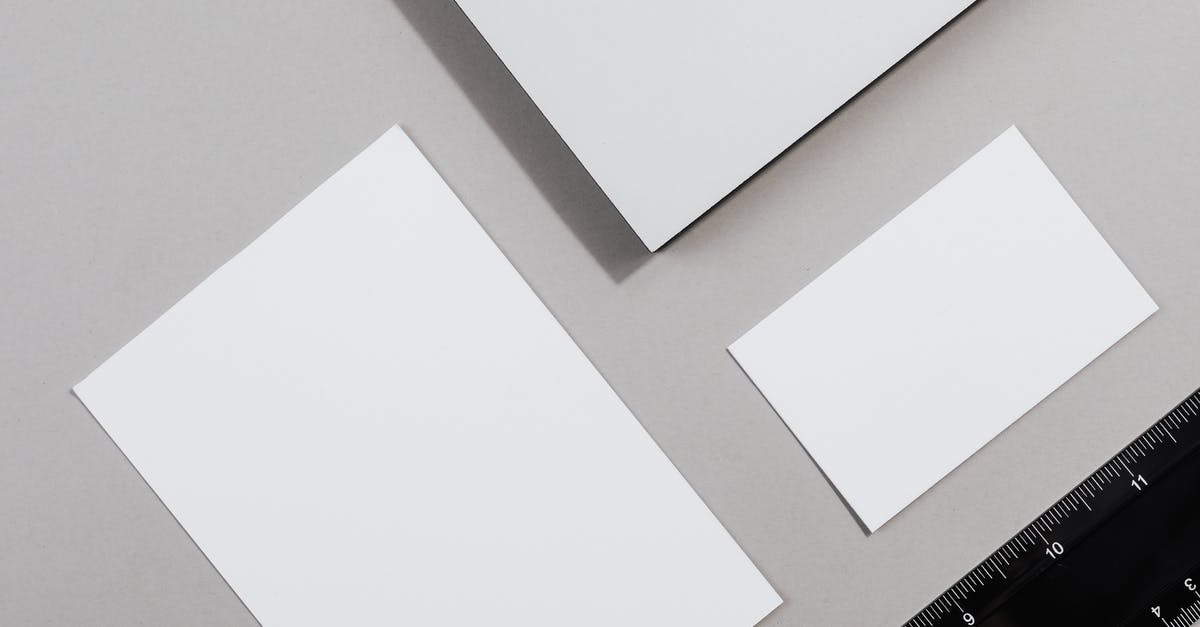Troubleshooting a soggy baklava with torn sheets

I've attempted to make Baklava just once in my life and the results were pretty disasterous.
Some issues I have questions about when making the Baklava:
- How to handle the Phyllos dough sheets? These sheets were so thin and delicate that I inadvertently crumpled or ripped about half of them with my big meaty fingers. Is there a trick to holding them for some of the clumsier people? i just grabbed it by its corners but I usually ended up ripping off these said corners.
- How to handle the butter? The recipe didn't specifically mention what state the butter should be. Should the butter be really melted so that it thoroughly soaks into the phyllos or should it be just barely melted so that I can spread them on the sheets. Also when adding the butter, I always seemed to inadvertantly crumple up the sheets below it. How can I apply the butter without messing up the bottom layers?
- When I poured the syrup into the baked Baklava, all the syrup seemed to flow to the bottom and made the bottom way too soggy and goopy. This made it hard to cut and separate into individual pieces. (I ended up eating it almost like a pie) Did I do something wrong?
And finally, the whole layering, buttering, and adding the nuts took me over an hour. Are there general tricks to that will allow me to make Baklava faster?
Best Answer
1- To work with phyllo or yufka sheets the key is to keep them from drying out. A damp, but not dripping, towel laid over the sheets is essential. Cover it after each time you take out a sheet. They dry out very fast and then just disintegrate.
2- The butter should be melted but not hot. Many recipes call for it to be clarified as well but I don't personally notice a difference in baklava so I skip that step. Its main purpose, besides flavor, is to keep the layers separate during baking. You don't have to spread it or work it in. Just brush it on gently.
3- The baklava is cut into diamonds, almost all the way through, before baking it. It can't be cut after it is baked and crisped. If it is cut all the way through before baking then it will pull itself apart. Pouring the syrup evenly over the whole thing will help. The top layers will soak up some but will definitely be drier than the bottom. It is supposed to be sticky and syrupy on the bottom- that's pretty much the whole point. The soaked pastry should still be chewy and distinct. Not crisp necessarily but candied. If it is too soggy then you might not have baked it long enough.
4- You can get faster at it with practice but not too much faster. It is a long process but it is fun to do with help. We make it as a family.
Pictures about "Troubleshooting a soggy baklava with torn sheets"



Quick Answer about "Troubleshooting a soggy baklava with torn sheets"
Why does baklava get soggy?
Soggy baklava is a result of the butter brushing, not the sauce. Cool completely before serving and don't store in the fridge, or covered. Leave it uncovered on the counter, or it will become soggy. Don't take this anywhere unless you want to be forced to make it every single year for the rest of your life.How do you keep filo pastry from getting soggy?
Working with Phyllo PastryOpen the packaging and unroll the sheets, immediately covering the dough with a clean, damp tea towel. This is needed to keep the dough moist. (Note: keep the dough covered at all times when you are not working with it.How do you make crispy baklava?
Can You Fix Soggy Baklava? By now, you should be able to understand that fixing soggy baklava is not an easy task. However, there is one method to bring them back to life. As I said, you can microwave them for 15 seconds and pour warm honey or syrup onto them.How to Make Baklava From Scratch! Easy Turkish Walnut Baklava With Secrets You Can't Find!
More answers regarding troubleshooting a soggy baklava with torn sheets
Answer 2
Baklava truly is the dessert of the gods. One of my favorites! And a real treat for many people who are used to desserts that simply compete with one another to be as fatty and as sweet as possible, with as many different "types" of chocolate as can be reasonably crammed in. The rich flavor of nuts and the floral sweetness of honey and rose water can be a really refreshing change.
Phyllo
Phyllo is always tough to deal with. The two enemies, ironically, are getting it wet, and letting it dry out. Most phyllo in modern groceries is purchased frozen, and you have to somehow thaw it and make it usable. The method on the package recommends moving it to the fridge 24 hours before use to allow it to slowly thaw. I do not usually succeed at this, because my fridge seems to be too moist. An alternative method popularized by Alton Brown is to leave the phyllo frozen until you use it, and then right before use, microwave it on high for 60 seconds. This has worked wonders for me, but still seems to fail for others.
Other tips:
- Purchase phyllo from stores that sell a lot of it, so it hasn't been in the freezer long. This may be hard to judge, but "fancier" groceries will probably go through more of it.
- Keep it frozen in your shopping basket - it doesn't have much thermal mass and will thaw quickly. Put it in your basket last, pack it in the bags with other frozen foods, and get it home and into your freezer fast. If it partially thaws, moisture will build up in it, and cause you problems later.
- Keep it from drying out by draping a lightly damp cloth over it while you are working.
Butter
I've had the best success with clarified butter, because the water has been removed. It isn't necessary, but it is helpful if you are trying to get the most out of your baklava. You can buy clarified butter, or the very similar desi ghee at Indian markets. You can also clarify butter yourself.
I use my brush to drizzle hot (but not scalding) clarified butter over the sheet, then gently spread the drizzles out with the brush. Getting a good coat on the bottom of the pan, and on each successive layer will help the next layer stay in place while you brush.
Cutting and Syrup
I prefer to cut the baklava about half-way through the baking process. That has given it a chance to firm up a bit, but not get too crackley. After it has been removed from the oven, allow it to cool for 2 hours, then cut again, along the same lines.
For syrup, I like a mix of honey and sugar syrup (equal parts honey, water and sugar, plus desired spices, heated to fully dissolve and simmered for 10 minutes). Honey-only syrups don't set up as firmly, and can be a little "too honey" for some palates. The syrup should be hot when applied to the baklava, but the baklava must be fully cooled. After applying the syrup, cover, and allow the whole thing to cool fully, preferably overnight, before serving. It takes time for the hot syrup to penetrate the folds, and then even more time for it to set-up fully. Baklava is often best prepared a day or two before serving, not as a fresh pastry.
Answer 3
This is an answer to the "how to make it faster" portion of your question.
Here's how you make it, quick, easy, and 99% as good as if you'd spent an hour painting each phyllo sheet using a brush made with magical unicorn tail hair.
- Take half the phyllo and place on baking sheet
- Spread nuts/sugar/cinnamon on top
- Take other half phyllo and cover the nuts/sugar/cinnamon
- Cut into diamonds
- Pour melted butter evenly over the dessert (tilt pan to spread any pools)
- Bake
- Pour syrup on hot baklava
The time savings is not buttering each layer. The melted butter will soak in through all the diamond cuts.
Will anyone notice you didn't spend an hour of your life painstakingly buttering the sheets? No, they'll be too busy eating the delicious dessert you just made them.
The sheets on the bottom of the dessert weren't going to puff up anyway, and ... surprise, the sheets on the top of the dessert still puff up nicely.
Purists will pooh-pooh even the thought of not buttering the dough, but they're also the people spending 2 hours painstakingly stirring their risotto and adding liquid in 1/2 ounce increments.
Answer 4
It depends if you want a nice baklava or a quick one. I am not familiar about the quick baklava, so I will share my tips on delicious baklava:
- Phyllo pastry needs to be at room temperature before you handle it. Otherwise it retains some of the moisture that make the individual sheets stick to each other. However, do not take it out of the package till you are about to use it.
- You need to put butter on top of each sheet. It is essential as it alters the properties of cooking of the pastry.
- I have not experimented between clarified or non clarified butter - I am not sure if it would make a difference. The main benefit of clarified is that I think it boils at a different temperature.
- You can experiment with different types of butter (from cow or sheep milk) or a mixture. The goat one will give a different flavour and is a bit stronger.
- Cut the phyllo pastry in the shape of your tray and choose a tray with vertical walls
- You can either put half of the phyllo sheets on bottom and the other half on the top or you can have a combination of having 2-3 phyllo with mixture of nuts alternating (after using both I opted for the former)
- If you have commercially made phyllo then use 20 for top and 20 for bottom. If you have extremelly thin phyllo made by an excellent baker (I have seen it only in turkey) double that
- Use extremelly low heat (even gas 1-2) but for 2-3 hours. This way the phyllo will get cooked without getting burned. Even when you pour the syrup over, it remains nice and crisp. This is one of the best ways as I think it is an art to make a baklava that is crispy and wet. Otherwise on higher heats the baklava won't have time to cook enough and will get a bit soft and soggy.
- No need to take the baklava out of the oven to cut it. Once you have prepared the mixture and you have put butter on the top, stick it in the freezer for 10-15 min. This would be enough to make it solidify so you cut it easily. I cut mine with a plastic knife as I don't want to scratch my aluminium baklava tray. At the same time you turn the oven on to get it ready.
- For the top of the baklava you may want to spray it with water lightly before you put it in the oven. This would prevent it from the top phyllo rising too much.
- Cut small pieces of baklava. It is very rich and it is nice not to get an overdose of sweet and nuts.
- Hot syrup over hot baklava .
- For your syrup you can experiment. I am originally greek and I love the smell of cinamon and cloves. Thus, I add in mine syroup cloves and cinammon sticks (only a stick and 3-4 cloves). My wife who has routes from Lebanon prefers rose water - find what you prefer. You can also add small pieces of skin from orange/lemon.
If you use cinnamon stick do not throw it away once you finish. If you serve the baklava from the tray you can put the cinnamon stick on top for decoration. - I live in the north east of England. I prefer the greek phyllo that I can buy from small corner shops that specialise in food from the Middle East/Turkey, or other phyllo you may find there.
Good luck and remember that you need to experiment to find the baklava you want. I started making it as a student and kept changing different things till I found what I liked. Some of my thinking was influenced by a Greek cook who was originally from Istanbul, and studied then cooking in France. My aluminium tray is from Turkey as I could not find a square one that would fit my purpose in Greece or UK or online.
Answer 5
Ripping Sheets of Filo: The sheets are still cold. The dough will tear near the center wrinkles when it's too cold. Room temp dough allows you to gently pull out all the wrinkles and the dough separates easily. As long as the outer package is sealed, you can leave the dough out for several hours to be sure it warms up.
How to handle Filo: Gently bend a corner of the dough to separate the sheets. Pull one sheet corner up just enough to slip the back of your hand under the corner. Working from the outer edges towards the center, carefully lift the sheet with the back of your hand. If your sheets start to stick in the same place, the dough is too cold. Always keep a damp (not wet) towel to cover the dough. The dough should be covered by the plastic it lays on and then the towel on top of the plastic to seal out air at the edges. Don't let the damp towel touch the dough or get it wet. Wet dough is worthless.
Rips and Wrinkles: Don't worry too much about the tears or wrinkles. they actually help the dough crisp up by adding air pockets when baking. It will make for a less soggy baklava if you put wrinkle in your sheets as you layer them.
Butter Spreading: I used soft melted butter, 1/2 stick at a time. Hot melted butter makes the dough too wet and adds to a soggy mess. The butter should be melted but not watery. You don't have to saturate the sheets with butter. Just a light brushing and not every part of the dough has to be buttered. The butter helps crisp the dough if used lightly. Use a pastry brush (or back of a large spoon) to evenly spread out butter from the center to the edges. The first layer after the nuts is always a tricky one as it slips and slides everywhere. So, I splatter the dough with butter, but don't spread it. Then I gently pick it up and flip it over so the butter side is down. The butter helps hold it in place against the nuts and I can spread the top and continue on with out any troubles. The last sheet on top should be lightly covered all over to prevent drying out and use a bit more than before to help it from curling up from dryness when baking.
Avoiding Soggy Bottom: Cut your baklava before baking with a pointed knife. Making sure the tip of the knife only pierces the bottom layer not cutting through it. This keeps the syrup from settling only on the bottom and allows it to stay near the nuts to soak in the middle. After baking, add room temp syrup immediately to hot baklava (it should sizzle). Then allow it to cool and settle for at least 6 hours before cutting through the bottom layers. The longer it sits, the better it works. I make it 2-3 days in advance before I cut the bottom layers and serve.
Result: Crisp flaky layers with sticky (not soaked and gooey) sweet nectar flavor.
Answer 6
The other answers have all explained most of the process really well. So, I'm just going to add a couple of options to make the butter part a lot easier.
- Use butter flavored cooking spray instead of butter. It's super fast, easy, and convenient. Just spray it on each layer. The result is good, but not quite as good as real butter. The big downside is that the aerosolized oil gets everywhere.
- Put melted butter in a cheap plastic spray bottle. You're going to do a lot of spraying, so get one with a trigger instead of the little button on top. You may want to throw the bottle away when you're done because it's going to be a buttery mess that's hard to clean. Plus, the bottle may collapse a bit as the butter inside cools off.
I've tried both of these techniques. They both work and they both save a lot of time.
Answer 7
Either your pastry should be hot and your syrup at room temperature or the other way around. This is a good rule of thumb for all syrup soaked pastries. If both the baklava and syrup are hot when you pour the syrup over you will end up with a goopy mess.
Answer 8
You can save a lot of time if you try a simple alternative: Spread one layer of buttered phyllos, and a layer of nuts mixture on top. Then curl it up into a cylinder. Then curl the cylinder into a spiral. Cut it into smaller pieces, then bake. It's 100% the same as usual baklava, only the shape of the pieces differs. Here's the recipe in more detail (although you don't realy need a dowel, and you can add a bit more filling to the phyllo): http://thegreekvegan.com/baklava-saragli/
Answer 9
My secret is that after you have cooked your baklava, turn off the oven and let the baklava sit a bit longer in the oven - it crisps up better
Sources: Stack Exchange - This article follows the attribution requirements of Stack Exchange and is licensed under CC BY-SA 3.0.
Images: ready made, Lisa, Lisa, Karolina Grabowska
